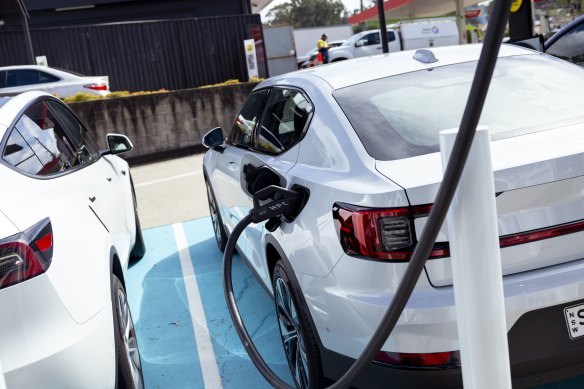
But if thresholds moved in line with inflation, the budget would show a deficit of 1.5 per cent of GDP – or about $60 billion – by 2035. If thresholds moved with wages, the deficit would be around $85 billion.
“In both scenarios, the budget would never return to surplus, meaning that future governments cannot afford to fully compensate taxpayers for bracket creep without increasing other taxes or
substantially cutting spending,” the budget office noted.
Personal income tax already accounts for half of all revenue raised by the federal government. This will grow as other sources of cash recede.
The budget office noted excise revenue, which in the early 1980s accounted for a quarter of all tax, is on track to fall to just 5 per cent of total Commonwealth collections by the middle of next decade.
The advent of electric vehicles and more efficient petrol-driven cars is expected to reduce fuel excise, which the budget office projected could be between $2.8 billion and $4.8 billion a year lower by the mid-2030s.
Loading
Tobacco excise could collapse to little more than a rounding error, while alcohol excise could also fall.
“Together, the most extreme downside scenarios would result in excise being lower by $12 billion by the end of the decade,” the budget office found.
“As the tax base narrows our reliance on personal income tax increases. Government revenues become more sensitive to both changes in the composition of the economy and future policies to compensate taxpayers for the impact of bracket creep.”
Government spending is expected to ease slightly over the coming years, mostly due to smaller grants to states and territories for major infrastructure projects.
The fastest growing expense is interest on federal government debt and the National Disability Insurance Scheme.
But the budget office warns that spending on government departments and grants programs has been consistently underestimated. If this were to continue, the budget would be $50 billion worse off in 2034-35 while the government would be carrying $300 billion in extra debt.

Growing use of EVs and more efficient vehicles will reduce the amount of fuel excise collected by the federal government.Credit: Dominic Lorrimer
In the short term, Treasurer Jim Chalmers will receive some good news on Friday, with monthly figures expected to show a sharp but temporary improvement in the budget.
In May, Chalmers forecast a surplus of $9.3 billion for the current financial year. To the end of April, the budget was showing a surplus of $300 million, but this is expected to have been inflated by large corporate tax collections over the past month.
It may not last long with extra expenses in June likely to bring the overall surplus down to around its May forecast.
“Whatever the final result, it’s already clear that delivering back-to-back surpluses for the first time in nearly two decades is the right thing for our economy, for interest costs in the budget, and as a buffer against global uncertainty,” Chalmers said.
Cut through the noise of federal politics with news, views and expert analysis. Subscribers can sign up to our weekly Inside Politics newsletter.



























